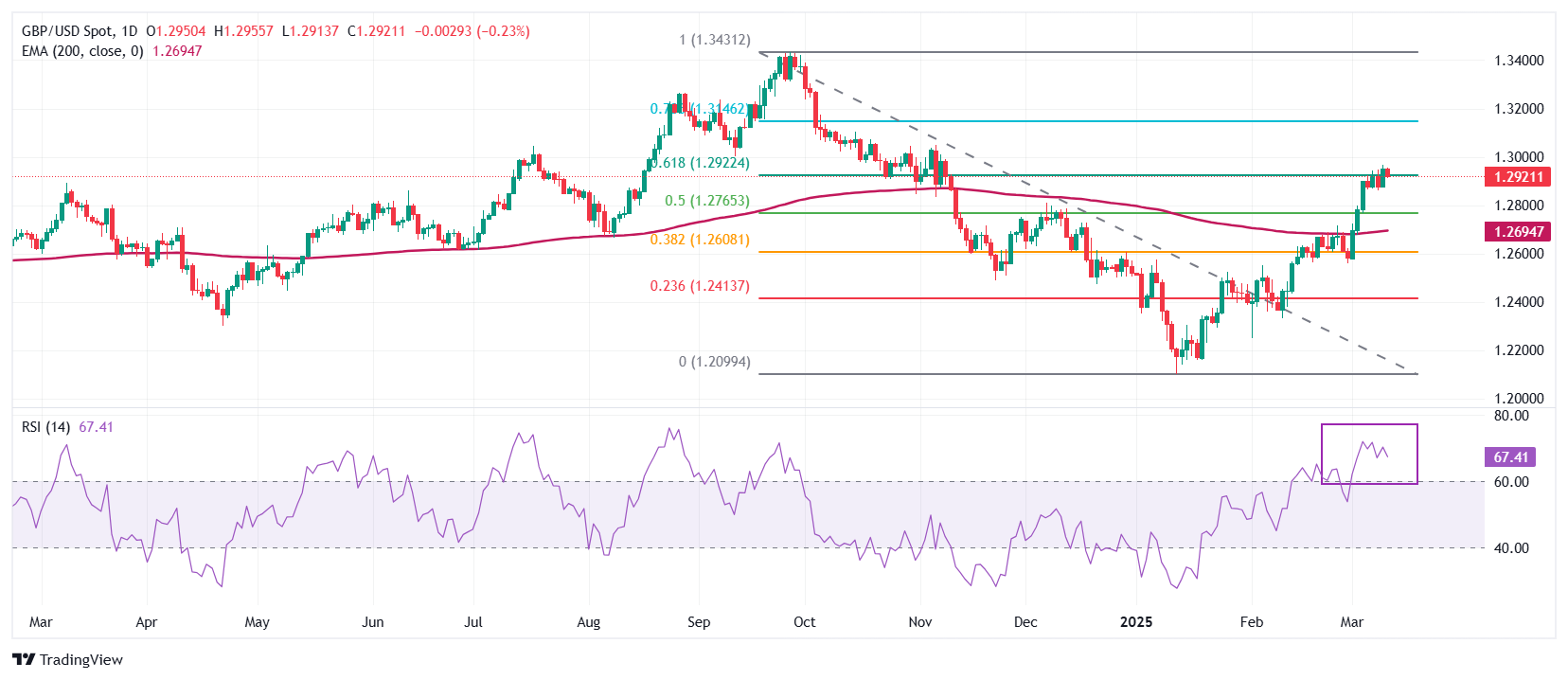- The Pound Sterling climbs near 1.2980 against the US Dollar following softer US CPI data for February.
- Investor sentiment remains cautious as President Trump’s tariff policies weigh on risk appetite.
- The Bank of England is expected to hold interest rates steady in next week’s policy meeting.
The Pound Sterling (GBP) surged to a fresh four-month high of 1.2980 against the US Dollar (USD) during Wednesday’s North American session. The GBP/USD pair gained strength following the release of the United States (US) Consumer Price Index (CPI) report for February, which indicated a moderate rise in inflationary pressures.
Year-over-year headline inflation cooled to 2.8%, down from January’s 3% and below the estimated 2.9%. Meanwhile, core CPI—excluding volatile food and energy prices—slowed more than expected to 3.1%, compared to forecasts of 3.2% and the previous reading of 3.3%. Both headline and core CPI increased by 0.2% month-over-month, softer than the expected 0.3% rise.
The softer US inflation data has strengthened market expectations that the Federal Reserve (Fed) will resume its policy-easing cycle, which had been paused since December. Fed Chair Jerome Powell recently stated that the central bank could maintain its restrictive stance longer if inflation progress stalls.
Despite the weaker inflation report, the US Dollar showed unexpected resilience, rising after the CPI release. The US Dollar Index (DXY), which measures the Greenback's value against six major currencies, rebounded to 103.75 from a four-month low of 103.20.
Market Movers: Pound Sterling Steadies Ahead of UK GDP and Factory Data
- The Pound Sterling trades cautiously against major peers as investors await key UK economic data and next week’s Bank of England (BoE) policy meeting. Markets widely expect the BoE to maintain interest rates at 4.5%, with officials advocating a gradual and cautious approach to easing.
- Last week, BoE Governor Andrew Bailey and three other policymakers signaled that monetary policy would be unwound gradually, as inflation persistence remains a concern. However, BoE member Catherine Mann supports a more aggressive rate-cut strategy, citing market volatility and cross-border economic risks.
- Investors will closely watch the UK’s monthly Gross Domestic Product (GDP) report and Industrial and Manufacturing Production data for January, set for release on Friday. The UK economy is expected to have grown by 0.1%, moderating from December’s 0.4% expansion, while factory output is projected to have declined.
- On the geopolitical front, US President Donald Trump’s tariff policies continue to unsettle global markets. Trump recently threatened to double tariffs on Canadian steel and aluminum imports but later reversed the decision after Ontario Premier Doug Ford agreed to scrap a 25% surcharge on electricity exports to the US.
- US Commerce Secretary Howard Lutnick defended Trump’s tariff approach, calling it a negotiation tool to strengthen trade deals. In an interview with CBS, Lutnick stated, “Let the dealmaker make his deals,” reinforcing the administration’s strategy of using tariffs as leverage in trade negotiations.
Technical Analysis: GBP/USD Eyes Break Above 1.3000

The Pound Sterling is poised to extend its rally above the four-month high of 1.2965 recorded on Tuesday. The long-term trend for GBP/USD remains bullish as the pair trades above the 200-day Exponential Moving Average (EMA) at 1.2695.
The 14-day Relative Strength Index (RSI) remains above 60.00, signaling strong bullish momentum.
On the downside, key support levels include the 50% Fibonacci retracement at 1.2767 and the 38.2% Fibonacci retracement at 1.2608. On the upside, the psychological resistance level of 1.3000 remains a crucial hurdle for further gains.





